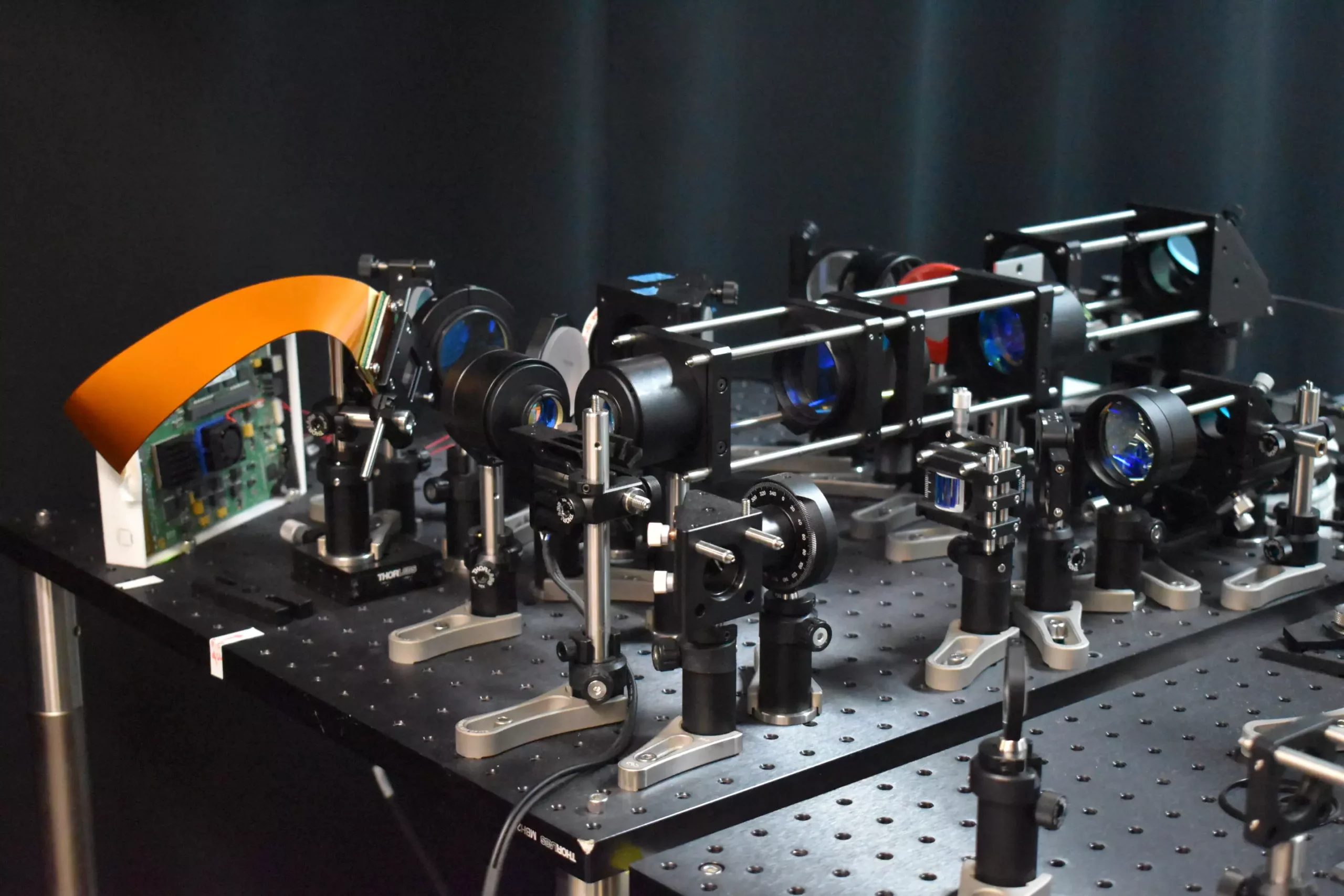Neuroscience research has reached a new milestone with the development of a cutting-edge two-photon fluorescence microscope capable of capturing high-speed images of neural activity at cellular resolution. Led by Weijian Yang from the University of California, Davis, the research team has introduced a groundbreaking approach that promises to unveil the mysteries of how neurons communicate in real time, offering invaluable insights into brain function and neurological diseases.
The innovative two-photon fluorescence microscope described in the study published in Optica utilizes a novel adaptive sampling scheme and replaces conventional point illumination with line illumination. By adopting this new method, the researchers have demonstrated the ability to conduct in vivo imaging of neuronal activity in a mouse cortex at speeds ten times faster than traditional two-photon microscopy. Moreover, the new approach significantly reduces the laser power on the brain, minimizing potential tissue damage.
The potential applications of this cutting-edge technology extend beyond fundamental brain function studies to include the exploration of neurological diseases such as Alzheimer’s, Parkinson’s, and epilepsy. With the ability to observe neuronal activity in real time, the new microscope offers a valuable tool for studying the pathology of diseases at their earliest stages. This could pave the way for more effective treatments and interventions in the field of neurology.
Traditional two-photon microscopy techniques, while capable of providing detailed images, are often slow and pose risks to brain tissue integrity. To address these limitations, the researchers developed an innovative sampling strategy that utilizes line illumination to target specific areas of active neurons in the brain. This adaptive sampling approach allows for faster imaging processes while minimizing the total energy deposited on the brain tissue.
Utilizing Digital Micromirror Device (DMD) Technology
Central to the success of the new microscope is the use of a digital micromirror device (DMD), a chip comprising thousands of tiny mirrors that can be individually controlled. By dynamically shaping and steering the light beam using the DMD, the researchers can precisely target active neurons in the brain tissue being imaged. This groundbreaking technology enables adaptive sampling and high-speed imaging of neural processes with reduced risks to living tissue.
The capabilities of the new microscope were exemplified through the imaging of calcium signals, indicators of neural activity, in living mouse brain tissue at a remarkable speed of 198 Hz. This breakthrough showcases the potential to monitor rapid neuronal events that would have been missed by slower imaging methods. Moreover, the adaptive line-excitation technique, coupled with advanced computational algorithms, allows for the isolation of individual neurons’ activity, enabling a deeper understanding of complex neural interactions and the brain’s functional architecture.
Looking ahead, the research team is dedicated to integrating voltage imaging capabilities into the microscope to provide a direct and rapid readout of neural activity. Plans are also underway to apply the new imaging method to real neuroscience applications, including observing neural activity during learning and investigating brain activity in disease states. Furthermore, efforts will be made to enhance the user-friendliness and reduce the size of the microscope to broaden its utility in neuroscience research.
The groundbreaking two-photon fluorescence microscope represents a significant leap forward in neuroimaging technology, offering unprecedented insights into dynamic neural processes and neurological disorders. With its potential for real-time imaging of neuronal activity and high-speed data acquisition, this innovative tool holds tremendous promise for advancing our understanding of the brain and improving treatments for neurological conditions.



Leave a Reply